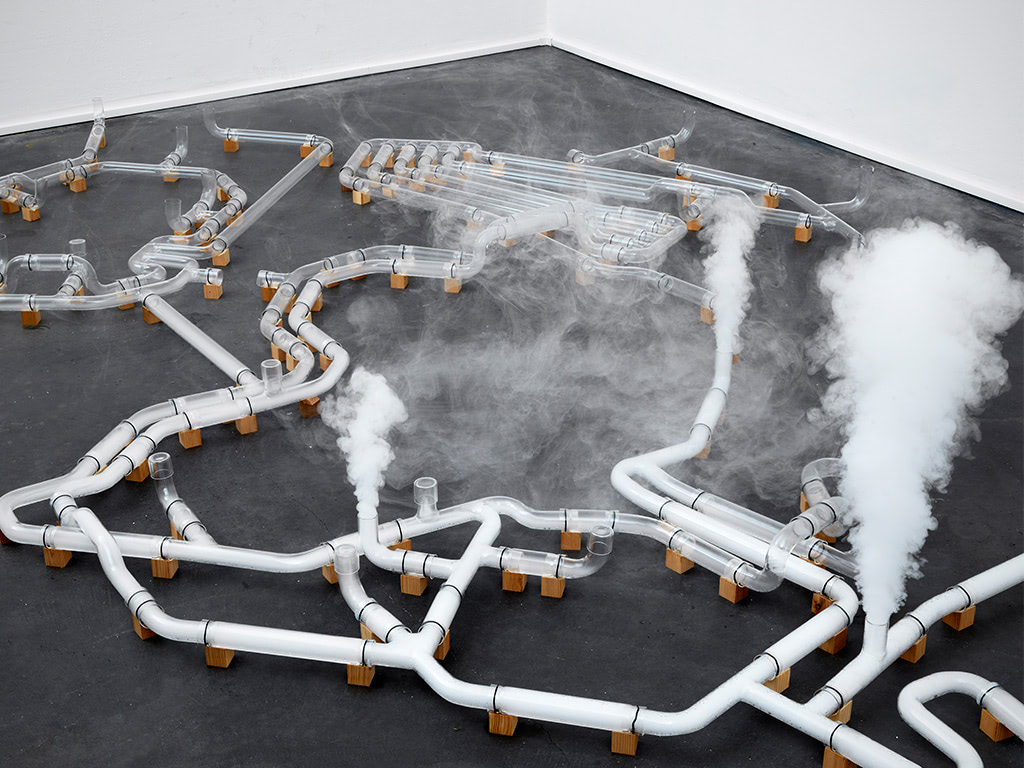Since the introduction of computers and the Internet, the digital has been conceptualised as virtual, untouchable, and immaterial. The metaphor of ‘the cloud’ illustrates this very well. When you store your data in the cloud, you store your data on someone else’s computer. You might not see the computer and it might be on the other side of the world, but the fact that you can’t see it doesn’t mean it does not exist. Digital technologies are becoming more and more advanced, smaller, smarter, increasingly integrated with our bodies and environments.
While we experience a world that is seamlessly connected through invisible technology, we tend to forget the ‘hidden’ technologies behind our digital tools (such as codes, softwares, 4G, Wi-Fi and cables).
The Internet is a huge constellation of networks that are all connected to each other. Dutch artist Jeroen van Loon materializes the undersea network of Internet cables with the installation An Internet. Van Loon questions what the Internet would look like if all data were ephemeral. The Internet is made possible by glass fibre cables that stretch across the floor of the ocean. An Internet consists of a system of glass tubes that recreate the network of undersea Internet cables.
The names of all 280 cables, like TAT-14, the cable between Great Britain and North America, WASC running between South Africa, West Afrika, Portugal and London, are converted into binary smoke signals. The smoke signals go into the glass tubes as temporary data. The glass tubes are filled with smoke until they start leaking and all the data is lost forever. An Internet not only visualizes the undersea network of Internet cables, it also represents a future vision of an Internet where data is ephemeral; data no longer created to be stored for the future, but only instantly accessible and then lost forever. A future where all data vanishes like the videos and photos taken with Snapchat.
An Internet was part of the exhibition Alien Matter, curated by Inke Arns, Haus der Kulturen der Welt in Berlin, 2 February - 5 March 2017.
Source: Transmediale, Jeroen van Loon. Image: Jeroen van Loon

Share your thoughts and join the technology debate!
Be the first to comment